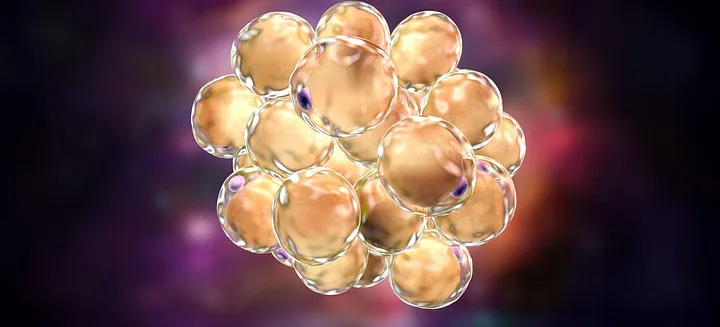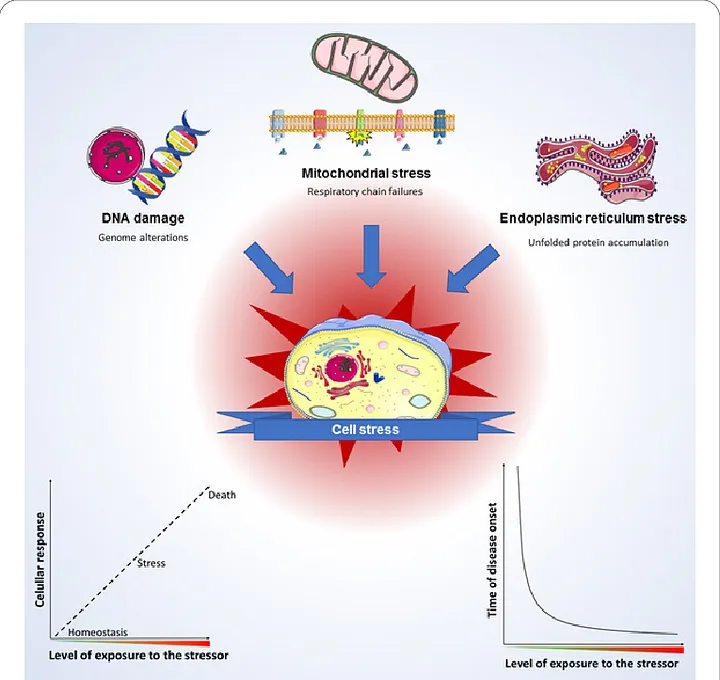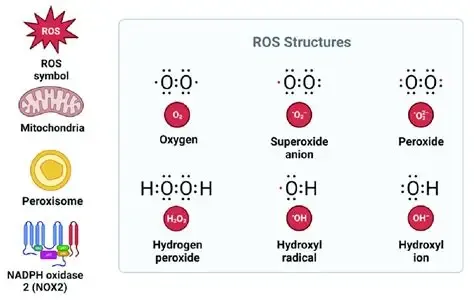
The findings of this study reveal how cysteine disrupts the cellular processing of carbohydrates and fats, inducing changes in tissues and contributing to extreme weight loss
Introduction
Dieting. Exercise. Counting calories. Experimental drugs. The global outcry for solutions to the obesity crisis spiraled into an overdose of these words, forever engraved in the minds of many who have since lost their way on their journey to be well.
In a meta-analysis of 29 long-term weight loss studies, more than half of the lost weight was regained within two years, and by five years, over 80% of the lost weight had been regained. Continuous failed attempts at losing weight may have contributed to the recent decrease in weight loss efforts from people struggling with obesity, and many now believe that weight loss is a futile endeavor. Obesity is a disease, and the need for an effective treatment is salient.
In May 2025, researchers at the NYU Grossman School of Medicine, motivated by their journey to learn about working with human metabolism, altered our understanding of the interconnected biological networks unlocked after eating through mice. Their study begins with mice, but the ever-expanding door that has been unlocked provides promise as we stride forward in our work addressing the obesity crisis and metabolic research.
Essential Amino Acid Restriction Diets
Essential amino acids are a group of nine amino acids (e.g., histidine, isoleucine, leucine, lysine, methionine, phenylalanine, threonine, tryptophan, and valine) that the body doesn't readily produce, meaning they must be acquired through food. The researchers used specialized, synthetic diets, called 5CC7 meal plans, which have been manipulated to remove a specific essential amino acid for each experimental trial. The results were then compared to the control diet, which was the 5CC7 diet without any manipulations.
What Are Essential Amino Acids?
Nine amino acids that our bodies cannot produce on their own, including histidine, isoleucine, leucine, lysine, methionine, phenylalanine, threonine, tryptophan, and valine. These must come from our diet.
The Discovery
"Our surprising findings reveal that low cysteine levels triggered rapid fat loss in our study mice by activating a network of interconnected biological pathways," said co-senior study author Evgeny A. Nudler, a professor of Biochemistry and Molecular Pharmacology at NYU Grossman School of Medicine and an investigator with the Howard Hughes Medical Institute.
Unlike any other amino acid-restricted diet, the cysteine-deprived diet was the only one to elicit a series of unique cellular processes. Cysteine is considered another one of the essential amino acids in certain mutated animals that can't produce cysteine alone. Cysteine specifically serves as a precursor to CoA, an enzyme (a substance produced by a living organism that acts as a catalyst to bring about a specific biochemical reaction) crucial in oxidative phosphorylation, which creates energy in the form of sugar for the body.
When CoA can't be synthesized correctly, many of the other reactants required for this energy production, such as pyruvate or citrate, are used ineffectively and are lost in urine. Without a source of energy typically found in sugars, the body turns to its fats and lipids to create new energy, burning fat (weight) in the process.

Cysteine deprivation disrupts normal metabolic pathways, forcing the body to burn fat for energy
The Activation of Interconnected Biological Pathways
Cysteine deprivation intensifies our body's natural processes, most notably the integrated stress response (ISR) and the oxidative stress response (OSR).

What stress does to the cell
Integrated Stress Response (ISR)
The integrated stress response is the cell's built-in system for maintaining homeostasis, a process by which cells are regulated through signalling and other pathways to execute daily functions, when it senses danger or stress. When something goes wrong, such as a lack of nutrients or DNA damage, the cell activates the ISR to protect itself. One of the first things it does is slow down overall protein production to conserve energy for the selective production of stress-adaptive proteins. This targeted response helps the cell recover and return to its homeostatic state more efficiently.
Similarly, the oxidative stress response is a crucial defense system our cells use to deal with harmful byproducts called reactive oxygen species (ROS). ROS are unstable, highly reactive molecules that contain oxygen. They're naturally produced as a part of normal cellular metabolism, especially during energy production in the mitochondria, where oxygen is used to generate ATP. Harmful events such as exposure to UV light, pollution, radiation, and inflammation can also contribute to ROS intake.

Common ROS (reactive oxygen species)
ROS Benefits
Small amounts of ROS play helpful roles in cell signaling and immune defense
ROS Dangers
High levels can damage DNA, proteins, and lipids, linked to aging and disease
While small amounts of ROS play helpful roles in cell signaling and immune defense, high levels can be dangerous. Because they're so reactive, ROS can damage essential cellular components like DNA, proteins, and lipids. This damage is linked to aging, cancer, neurodegenerative disorders, and many other diseases.
To prevent this, cells activate the OSR, triggering the production of antioxidants (e.g., Vitamin A, Vitamin C, lutein, selenium) — special molecules that neutralize ROS before they can cause harm. The response also helps cells adapt to mild oxidative stress, strengthening their ability to survive future challenges.
Not only did cysteine restriction activate both of the stress responses, but it also activated them simultaneously, causing a reduction in regular protein production for only the response proteins. Counterintuitively, stress signaling levels increased as the two stress responses amplified each other, and molecules associated with food aversion were readily produced. Due to this loss of appetite and consequently less food consumption, the mice were no longer replenishing their fat stores, leading to swift and substantial weight loss.
Cysteine-Deficiency Rapid Weight Loss

The experimental design for measuring weight loss as a result of three treatments: control diet, no cysteine, and no tryptophan. Food aversion led to a caloric restriction (CR) response, resulting in extreme weight loss in the No-Cysteine experimental group
Dramatic Results
Researchers found that specifically removing the amino acid cysteine caused the most substantial weight loss, amounting to 30% worth of fat stores in one week.
Researchers examined the effects of removing individual amino acids in mice, and their results revealed that specifically removing the amino acid cysteine caused the most substantial weight loss, amounting to 30% worth of fat stores in one week.
When we are stressed, the body undergoes various chemical responses to help restore its equilibrium and the balance of its cells. In this case, cysteine deprivation in the diet resulted in the activation of the mice's stress responses, resulting in inefficient energy production and the excretion of reactants as waste.
Study Takeaways
The significant findings of the cysteine-restriction study do not necessarily translate to a cysteine-free diet, as cysteine is found in all foods. However, with evidence of the efficacy of a cysteine-deficient diet, scientists are hopeful of achieving clinical and affordable solutions for people struggling with obesity.
Future works involve harnessing parts of the cysteine-induced weight loss pathway to induce similar weight loss in humans without completely removing cysteine. As researchers continue to uncover the impact of diet and how it can be manipulated, this study provides a promising foundation that remains to be fully explored. The mice in this study were pioneers in the field of metabolic science. Although they have now returned to their normal cellular ways, actionable answers for the health of humanity will continue to be discovered and innovated, instilling hope and optimism in the fight against obesity.
Addressing the Obesity Crisis at Home

CDC reports on the effects of obesity across the nation reveal the importance of learning how to treat and prevent obesity for the well-being of our nation
Global Impact
16% of adults (890 million people) worldwide were obese in 2022
Rising Childhood Rates
Child obesity increased from 8% in 1990 to 20% in 2022
Future Projections
115% increase projected from 2010 to 2030
About 16% of adults (890 million people) aged 18 years and older worldwide were obese in 2022. In children, obesity rates went from just 8% in 1990 to 20% in 2022. The World Obesity Federation's 2025 Atlas, published on World Obesity Day (4 March), projects that the total number of adults living with obesity will increase by more than 115% between 2010 and 2030, from 524 million to 1.13 billion.
The longer a person lives with obesity, the greater the risk of developing serious complications such as type 2 diabetes, heart disease, social isolation, and depression linked to obesity. Addressing obesity at home can be a crucial step toward preventing obesity and promoting the health of future generations.
A Personal Message
Your body is your home: honor it, strengthen it, and give it the care it needs to protect and empower you every day. Work with it, not against it, and you'll build something unshakable.
Conclusion
Amid the discomfort of obesity disease, many feel isolated and lost in finding answers. Researchers are fighting for your answers, solutions that don't just treat your body but adapt with it. These cysteine-deficient mice taught us that food can heal, and the solutions for weight management may lie in the biological processes lying in plain sight in our bodies.
It's time to change our perspective from looking externally to exploring internally; after all, the lesson mice taught us was not to deprive ourselves of cysteine but to find ourselves in how cysteine works with our body to identify processes fundamental to the future of our health. Science is laying the groundwork, mice are teaching the lessons, but it is we, as humans, who get to decide what we do with it. Change starts now to tilt the trajectory of our future toward well-being.
References
Calakos, Nicole, and Zachary F Caffall. "The integrated stress response pathway and neuromodulator signaling in the brain: lessons learned from dystonia." The Journal of Clinical Investigation vol. 134,7 e177833. 1 Apr. 2024, doi:10.1172/JCI177833
"Cysteine depletion triggers rapid weight loss in mice." News Medical, www.news-medical.net/news/20250522/Cysteine-depletion-triggers-rapid-weight-loss-in-mice.aspx
"Newfound Mechanism Rewires Cellular Energy Processing for Drastic Weight Loss." NYU Langone Health, nyulangone.org/news/newfound-mechanism-rewires-cellular-energy-processing-drastic-weight-loss
"Obesity Strategies: What Can Be Done." CDC, www.cdc.gov/obesity/php/about/obesity-strategies-what-can-be-done.html.
"Unravelling cysteine-deficiency-associated rapid weight loss." Nature, www.nature.com/articles/s41586-025-08996-y.
Hall, Kevin D, and Scott Kahan. "Maintenance of Lost Weight and Long-Term Management of Obesity." The Medical clinics of North America vol. 102,1 (2018): 183–197. doi:10.1016/j.mcna.2017.08.012
